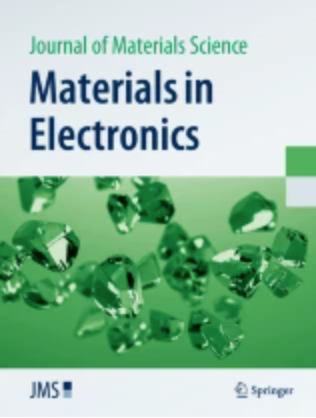Adapting of the linear/nonlinear optical and dielectric features of PVA/CMC/x wt% ZnAl2O4/ZnO blended polymers for optoelectronic and capacitive energy storage uses
Abstract
In current work, blended polymer films have been prepared from ZnAl2O4/ZnO nanocomposite loaded polyvinyl alcohol (PVA)/carboxymethyl cellulose (CMC) blended polymer to exploit the uses of the formed materials in diverse optoelectronic and capacitive energy storage uses. The structure crystallite size and morphology of the filler sample were explored. The influence of filler amount on the crystallinity of the host PVA/CMC blended polymer was detected. The optical absorbance improvement or decline was contingent upon the wavelength range and/or the quantity of filler. The sample doped with 8 wt% ZnAl2O4/ZnO nanocomposite has the greatest absorbance in the visible region. The direct and indirect optical band gap energy values increased as the ZnAl2O4/ZnO nanocomposite concentration reached 2 wt% and they subsequently decreased as the amount of ZnAl2O4/ZnO nanocomposite in the polymer matrix grew. Doping the host blend with 8 wt% ZnAl2O4/ZnO nanocomposite only enhanced its refractive index (1.72). The k values of the loaded composite polymers were either greater than or less than that of the undoped sample, relying on the dopant level and/or the wavelength range. The influence of doping amount and the wavelength range on the linear/nonlinear optical parameters were examined. The dielectric constant (16 at 1 kHz) and AC conductivity attained their uppermost value at 2 wt% filler content, subsequently declining with more doping. The sample with 2 wt% ZnAl2O4/ZnO nanocomposite has a greater capacitive nature. The insertion of ZnAl2O4/ZnO nanocomposite filler into the PVA/CMC polymer affected the Nyquist plot.

 求助内容:
求助内容: 应助结果提醒方式:
应助结果提醒方式:


